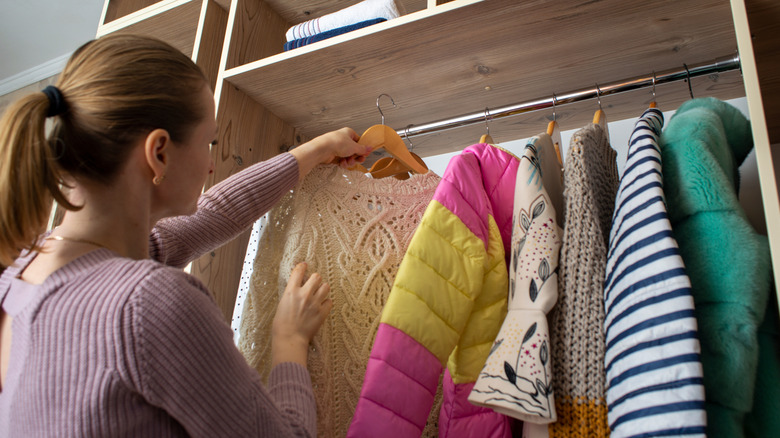Wardrobe Vs. Closet: Which Has Better Potential For Storage Solutions?
When it comes to storing your apparel, space is everything. If you're deciding between a wardrobe or a closet, especially during a remodel, it helps to determine which one will give you the most benefit spatially. The terms "closet" and "wardrobe," while sometimes used interchangeably, refer to two separate furnishings, and one may be more useful to you than the other.
Both wardrobes and closets are used to store clothing, shoes, and accessories. They both typically come with overhead shelves and vertical hanging spaces. Many reach-in closets and wardrobes may also be similar in size. The main difference between a wardrobe and a closet lies is in their designs. Wardrobes (or armoires) are typically large, standalone, and movable storage cabinets with doors that open up. Meanwhile, closets are unmovable, built-in fixtures inside a room.
In terms of size, building a larger closet instead of purchasing a large wardrobe would likely be your best bet. This is because wardrobes are standalone furnishings, meaning they take up more square footage than a closet. Even if you were to buy a wardrobe that's as large as a closet, you'll still lose space in how much bulk it takes up in a room. Despite this, there are a few key factors to consider before deciding to revamp your closet storage.
Storage capacity and organization
There are a few things to consider when deciding if a closet or a wardrobe has better storage solutions beyond the space it can offer. For example, the organizational capacity of each. If you have a room without a closet or need a place to store household items like cleaning supplies, towels, and linens, you may want to consider investing in a wardrobe to support these needs. You don't necessarily have to purchase one, either — you can get creative and learn how to DIY a chic minimalist wardrobe or a different style that fits your aesthetic.
When it comes to organization, wardrobes may come with plenty of compartments, including shelves and drawers, while closets can vary in their organizational offerings. Walk-in closets, for example, can be roomier and hold more space than a reach-in, but you're typically limited in terms of organization. A reach-in closet may be smaller than a walk-in, but it may also have more wiggle room for organization with hanging space and overhead storage. On the other hand, existing closets are useful to have because they're integrated into a room, and you can renovate if more space is needed. Plus, if you need more organization, you can always add extra organizers or give your closet a gorgeous built-in look using a dresser.

